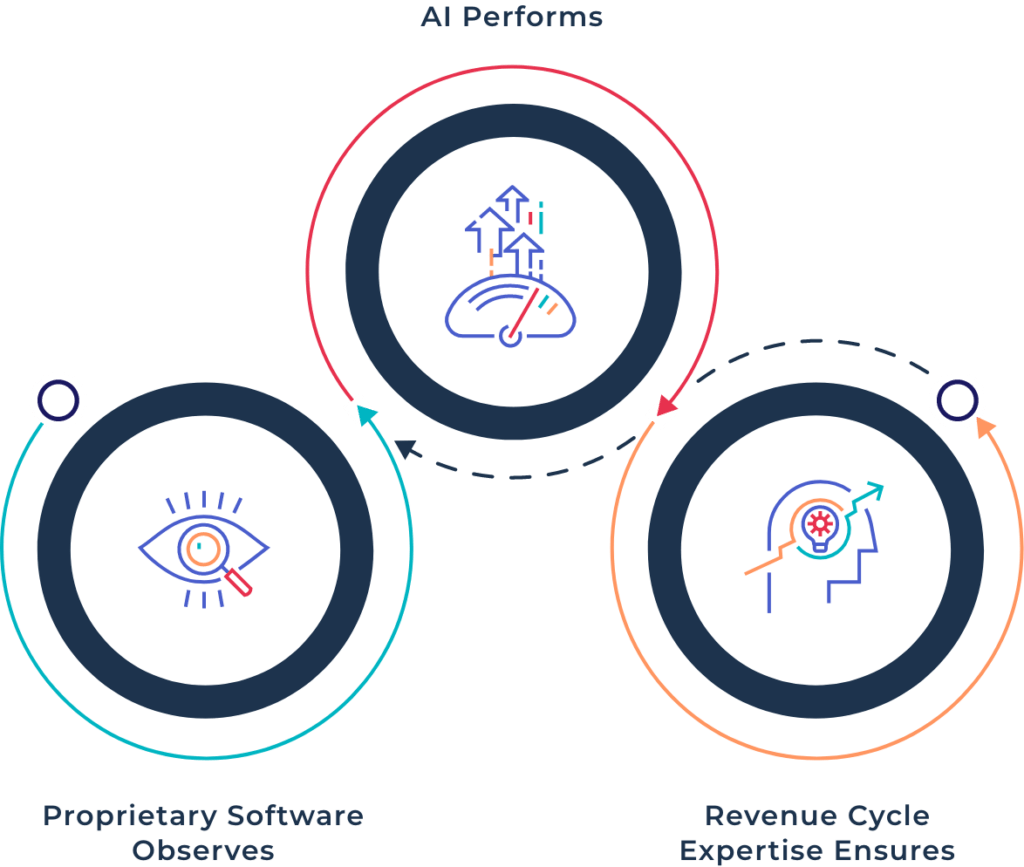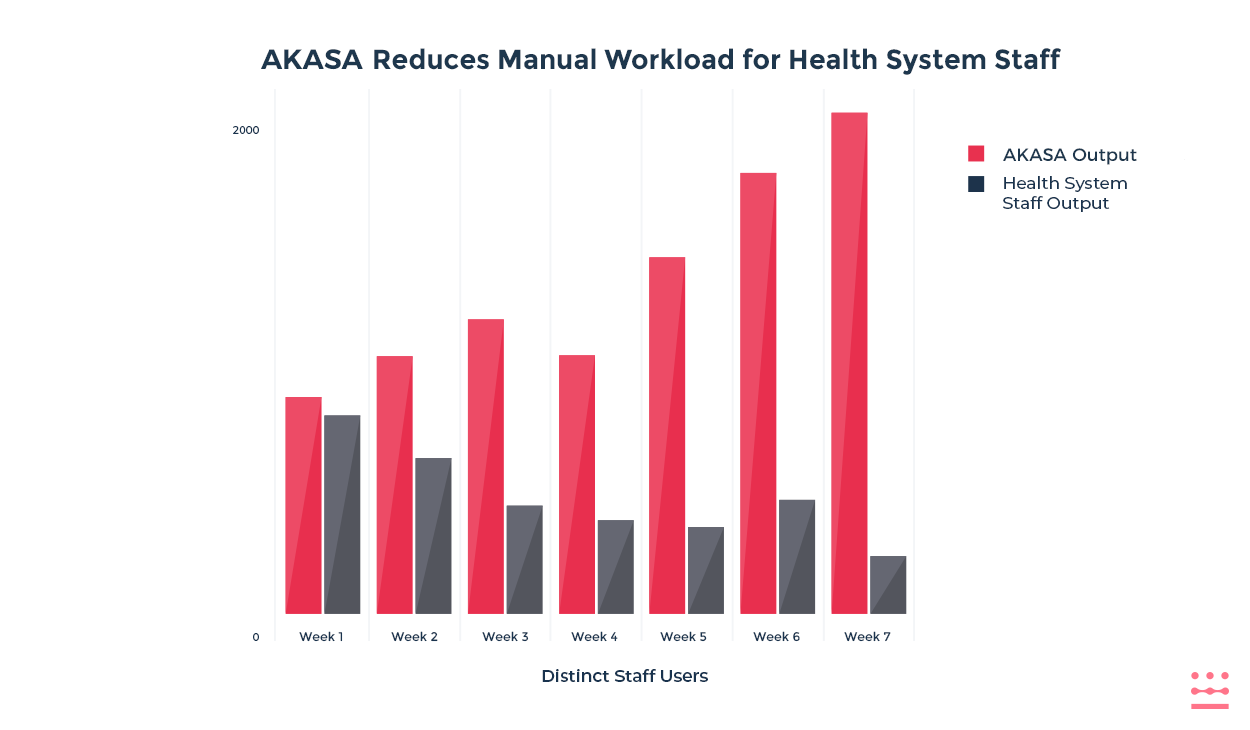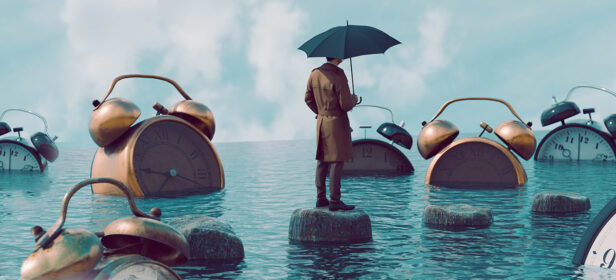The Gist
Healthcare revenue cycle leaders often aim for the most cost-effective processes possible. But, most attempts at increasing value in the revenue cycle using technology have either fallen short or failed completely. Our automation platform, Unified Automation®, aims to solve this age-old problem, boosting efficiency and cutting down on wasteful spending through leading-edge AI, machine learning, and human experts-in-the-loop.
At AKASA, we believe every dollar spent on healthcare matters, because healthcare matters to everyone. Complexity in medical reimbursement in the U.S. drives up hidden costs we all pay — both in terms of dollars, and, in the erosion of trust people have that our healthcare system will serve them well.
Although unknown to the vast majority of Americans, the leader of the revenue cycle department at a hospital or clinic is responsible for managing the financial infrastructure of healthcare. Their role is central, and their decisions and actions influence millions of providers and patients, and billions of dollars. Yet, they are some of the most under appreciated and underserved executives in healthcare.
Every revenue cycle leader we’ve ever spoken to is on a mission to be a better steward of the healthcare dollar. They recognize the ever-increasing demands on their team brought on by an increasingly complex reimbursement environment. When complexity can’t be addressed by simply adding more staff, leaders often explore new technologies to bring efficiencies at scale.
The vast majority of RCM departments have to painstakingly prioritize the most important tasks and focus their efforts so that it can be worked with their current staffing levels. This inevitably leads to increasingly aged A/R, delays in payments, and increased write offs. Implementing automation allows RCM leaders to assign staff/ team members to work that needs their skilled attention and allows them to work at the top of their license.
~ Amy Raymond – VP of Revenue Cycle Operations at AKASA
Unfortunately, the technology industry has not stepped up to help revenue cycle leaders meet their ambitious goals. Modern machine learning technology is often focused on clinical applications within healthcare, and little thought is given to applying those same approaches to the back office.
Most current healthcare automation efforts are driven by technology like robotic process automation (RPA), which is capable of solving many simple tasks but struggles with complex, changing workflows.
As a result, revenue cycle leaders are stuck stitching together multiple pieces of archaic technology. The end result is often more hassles than help from a patchwork of cumbersome technologies.
What Is Unified Automation?
At AKASA, we’ve developed a new approach we call Unified Automation — a single solution to automate and simplify revenue cycle management.
We evaluated modern automation approaches from some of the most complex domains in the world (such as self-driving cars), and we derived core principles — like the best ways to monitor existing workflows, learn from workflows at scale and quickly adapt to change. We then built proprietary technology from the ground up, using RPA as a foundation, to apply these core principles to the unique challenges of healthcare revenue cycle management.
We were very thoughtful about designing each component of our solution to fit together perfectly. We don’t white label software from other vendors. As a result, our vertically integrated solution includes every single component required for revenue cycle leaders to roll out the most comprehensive and advanced automation solution available, eliminating the need for a cumbersome patchwork of solutions.
Our solution lives and operates within the existing electronic health record (EHR) and billing systems of our clients. We can deploy entirely remotely and there is no new training required for existing health system staff.
Here’s how Unified Automation works:
- First, we observe existing workflows. We start by deploying our proprietary software that captures multi-modal data sets to provide a 360-degree view of current workflows and processes.
- Next, our system performs the work your workflows. Our machine learning algorithms are trained using the data observed in the first step, and then autonomously constructs complex flows that are impossible to script by hand. It also corrects broken workflows and often eliminate unnecessary work.
- Finally, the system flags our team of revenue cycle experts if there’s an edge case or new workflow it hasn’t encountered. Our team ensures the work is completed, stepping in to handle the tasks. Meanwhile, our automation watches and learns how to complete that task or navigate that challenge. The work is always completed, and exception queues are a thing of the past.

Unified Automation is a unique approach because it seamlessly blends human judgment and subject matter expertise with machine learning. Unified Automation is also antifragile. This means it extends beyond simple resilience or robustness. Resilient systems resist variance and disorder and stay the same; an antifragile system thrives and improves as a result of that same variance and disorder.
Changing Today for a Better Tomorrow with Unified Automation
Previous revenue cycle solutions often fell short, frequently encountering snags or struggling to keep up with the rising demands and increasing complexity of healthcare. This doesn’t have to be the case anymore.
Our automation is capable of rapidly scaling, taking on more payers as it learns. And, because it sits upstream, your team never has to interact with it. This allows your staff to focus on delivering a better patient experience, and you to continue working toward increased efficiency and less financial waste.
Below is a look at results from a customer where we scaled up quickly, and within three months, provided value equivalent to more than 8 full-time employees. Unified Automation offers revenue cycle leaders at health systems and providers of all sizes a powerful new tool for doing more with less. Unified Automation can help restore trust in healthcare, by bringing together the best of people, data and technology to address financial complexity in the US healthcare system.
Unified Automation offers revenue cycle leaders at health systems and providers of all sizes a powerful new tool for doing more with less. Unified Automation can help restore trust in healthcare, by bringing together the best of people, data and technology to address financial complexity in the US healthcare system.
We’ve helped countless organizations collect payments faster and do more with less, and we can help you, too. Schedule a free demo today and see how AKASA can help your healthcare organization be more efficient.











